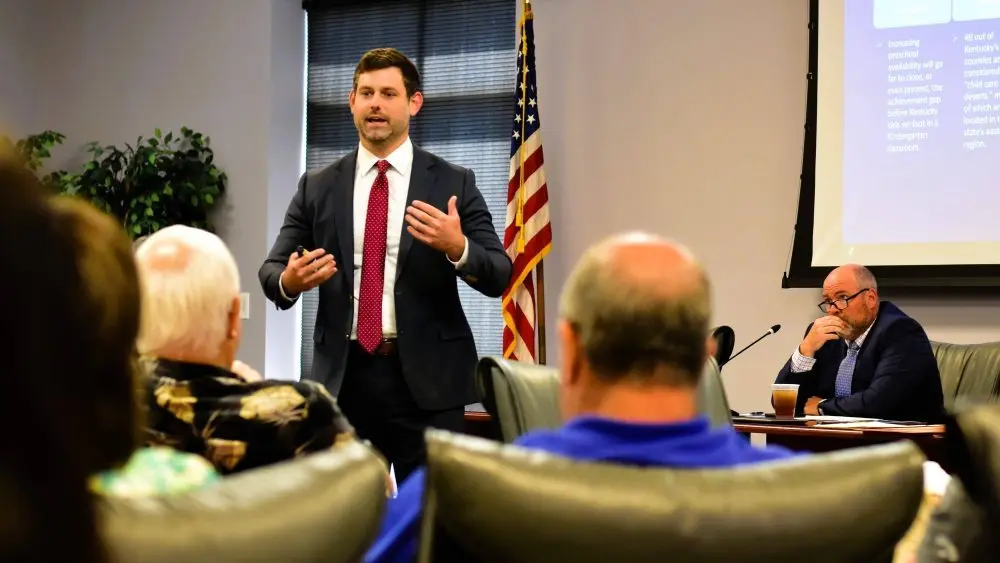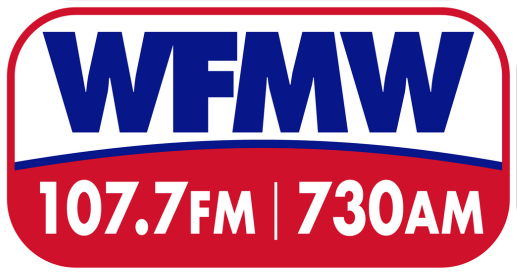
For more than 30 years, pre-kindergarten has been a part of Kentucky’s education profile — serving as a strong, stable, volunteer pathway for some successes in the Commonwealth’s youngest population.
Now, a bi-partisan coalition is hoping every 4-year-old will get the same equitable chances.
During Monday afternoon’s Pennyrile Area Development District meeting, “Pre-K For All” Advisory Committee Executive Director Sam Flynn called upon south western Kentucky leadership to join the line of communities calling their legislators — asking for the General Assembly to consider such financial measures in the upcoming biennium budget.
The reasons for universal pre-K, Flynn said, are wide-ranging — and include short studies in socioeconomics, microeconomics, macroeconomics, general economics, psychology and sociology to fully grasp the spectrum of benefits its passage could provide families and their children.
Currently, Flynn noted around 15,000 of Kentucky’s 54,000-plus pre-schoolers are either eligible, or are taking part, in some pre-school programming — a gap he would like to see closed.
Flynn’s committee was created under executive order from Governor Andy Beshear, and since its inception has been tasked with research, development and public outreach regarding the pros and cons of potential legislation and and its required appropriation.
At present, the annual cost of care through licensed centers near the lakes is around $7,100 — or roughly 13% of this region’s median household income, which sits at $56,000.
Furthermore in the Pennyrile, there are currently about 15,000 children aged 5 and under, with 73 child care centers, 11 family child care homes, 26 public preschool classrooms and 25 Head Start centers available. Right now, the number of children under age 5 per licensed educator seat is 2.5, while the number of counties classified as “child care deserts” is 4-out-of-9.
Flynn noted that this region’s overall labor force participation is around 67%, but 28% of individuals still live below the poverty line, while only 35% of available pre-K settings in the area are considered “high quality.”
Average kindergarten readiness in south western Kentucky, Flynn added, is 48% — meaning that, right now, every other student comes to either public or private schools deficient in one or more categories of preparedness.
Flynn said that, according to varied studies, parents could see a 21.7% increase in earning potential right away — up from $35,920 to $42,394 in one year — as adults, but particularly mothers, get more time to embrace gainful employment, while not divvying it to day cares or similar facilities.
Looking for immediate guidance, Flynn said Kentucky is looking to — among many states in the country — Alabama.
As for the potential for an upcoming ask of the General Assembly this upcoming biennium, Flynn said it would make more sense to complete an 8-to-10-year rollout for expansion — first addressing school districts that are prepared for the undertaking of new growth, rather than make some explosive decision for rapid expense.
An estimated, and conservative, cost would be an additional $60-to-$80 million on top of what is already provided — stretched over a decade — while Flynn answered that a “separate pot of money” could be used to improve existing or altogether build new pre-K facilities and develop needed transportation solutions.
As of 2024, Flynn pointed to the fact that only 34% of Kentucky’s early children are “ready” in the academic/cognitive domain…which is the lowest area of kindergarten readiness in the state.
Some states for comparison:
+ Alabama shares a similar profile to Kentucky, in terms of population, median household income and percentage of rural-to-urban areas, yet it remains a leader in quality with all 10 NIEER benchmarks met.
Furthermore, in 2017, Alabama observed differences be difference between pre-K and no pre-K, respectively: 73% to 67% in language arts, 67% to 61% in cognitive, 86% to 77% in literacy.
+ Georgia, meanwhile, was the first state to establish a free, state-funded pre-K program for all 4-year-olds, scaling its product and cost since 1992. Its extended day offering lowers expenses for working-class families.
+ Iowa offers state-funded pre-K for all 4-year-olds through its Statewide Voluntary Preschool Program, and remains a national leader with 66% annual enrollment.





